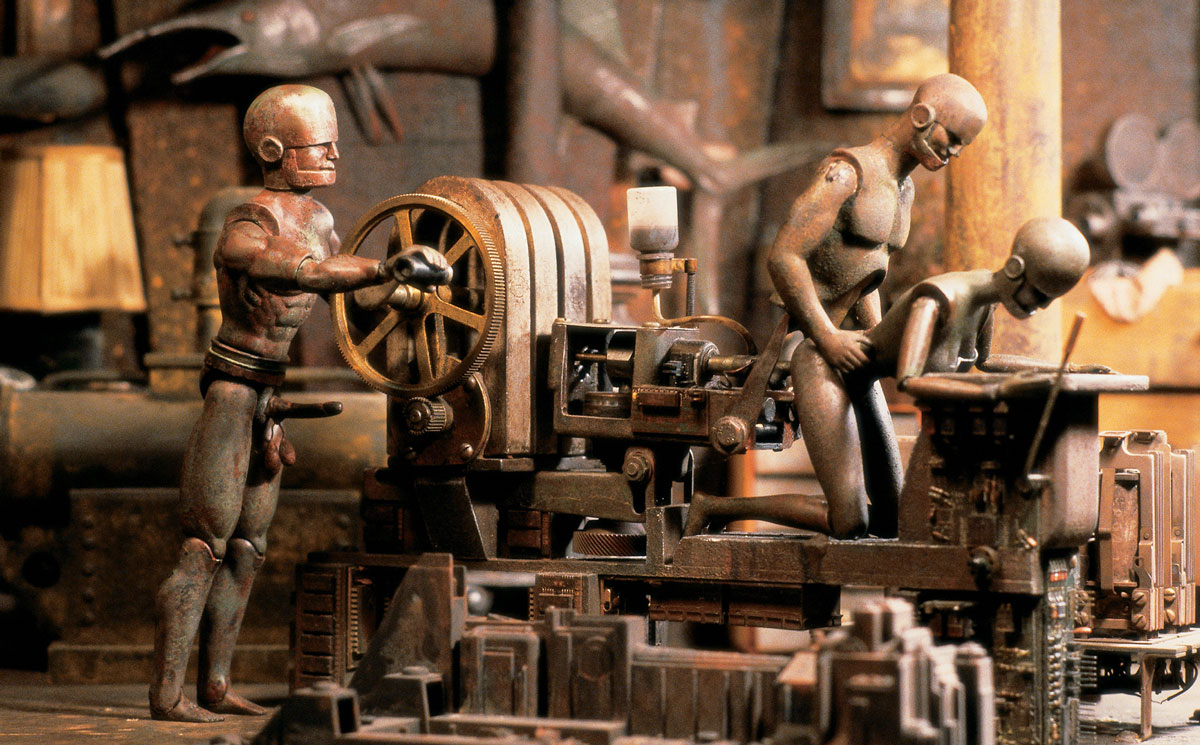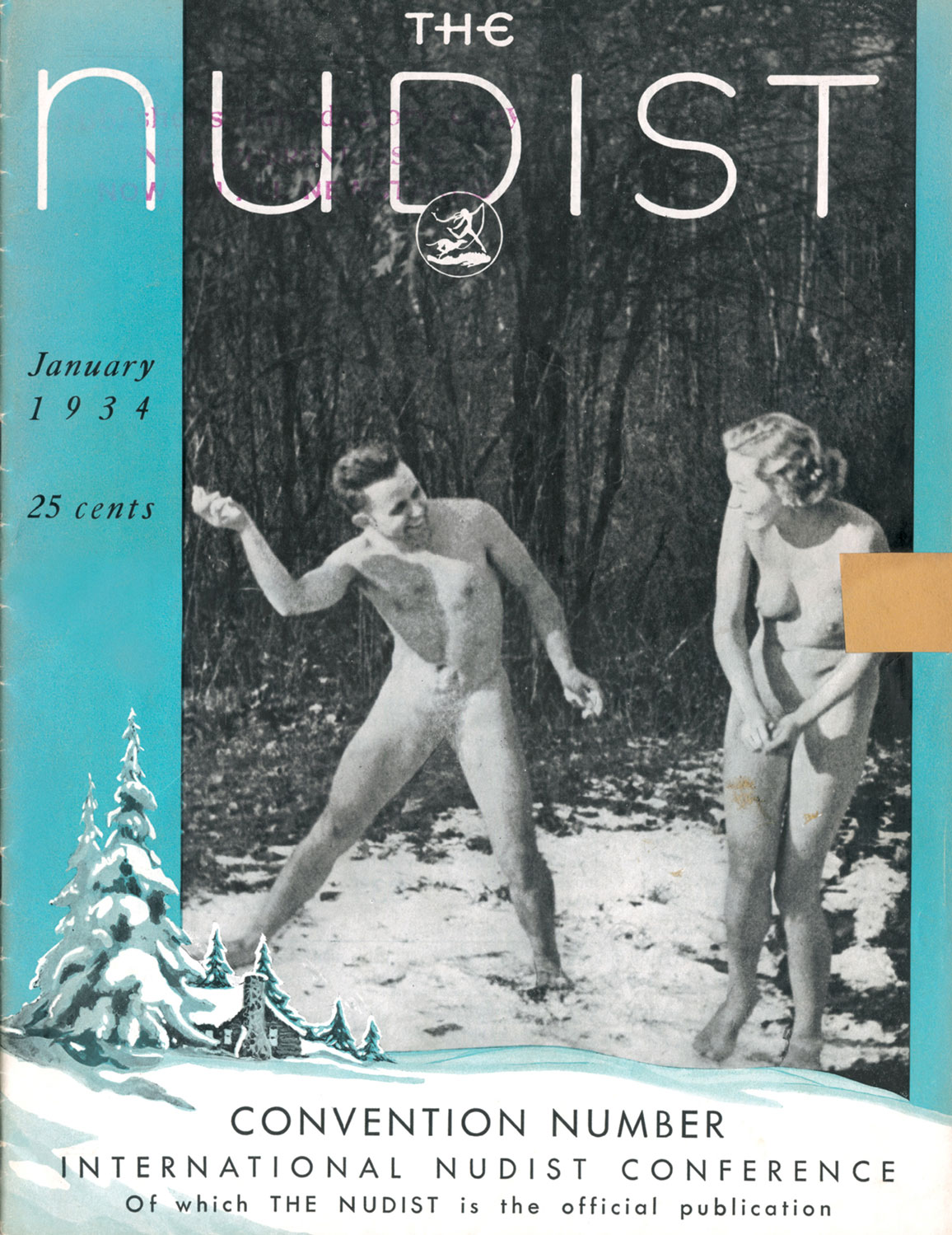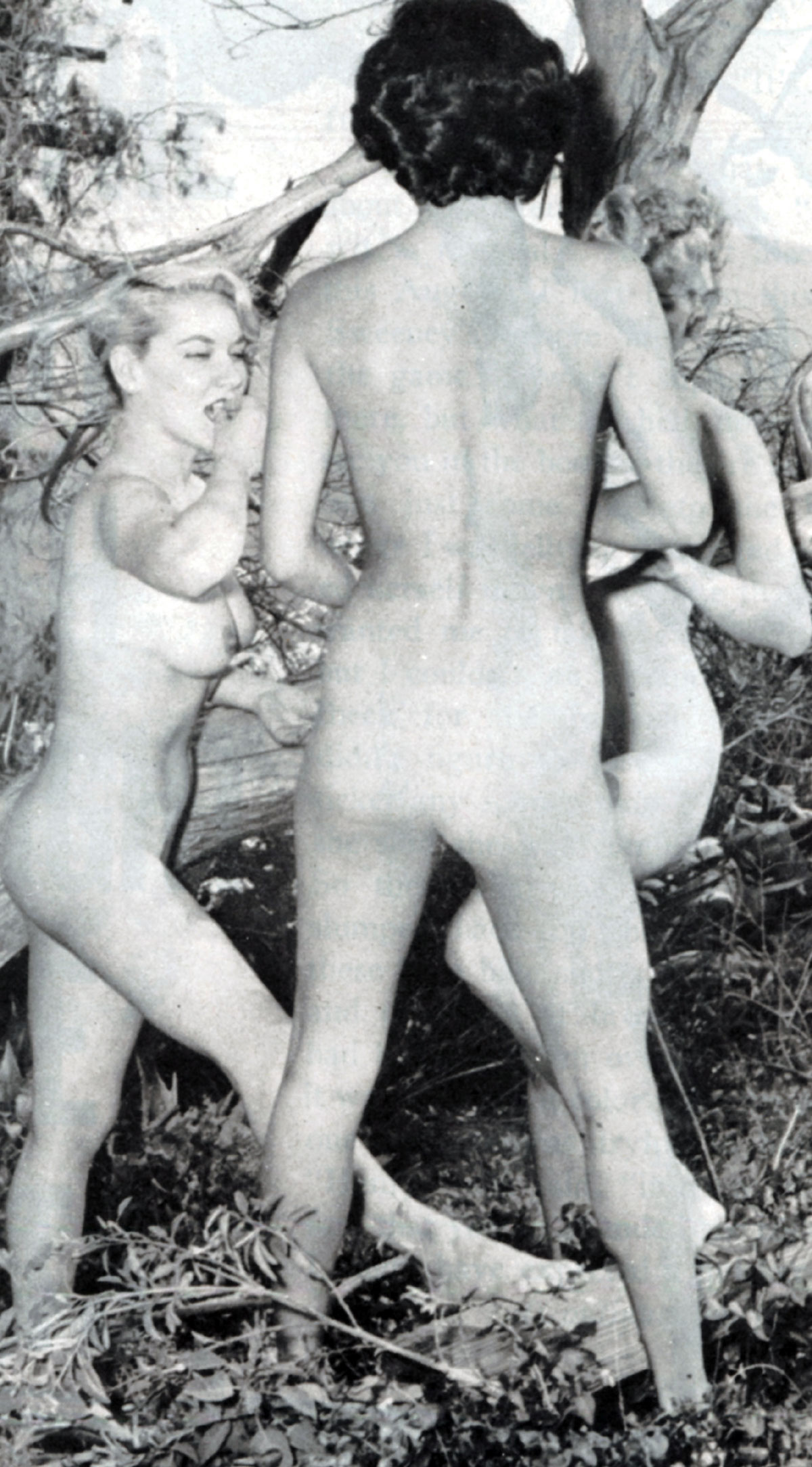R.U.R. or R.U. Ain’t My Baby
Three approaches to dehumanizing sex
John Strausbaugh
To reconfigure Barbies and Kens into bucket-jawed, sexually functional robots, Sullivan first shaves off their hair and sands down their ears and other features. Then he resculpts them using plumber’s epoxy. Sometimes he removes their hands and feet and builds them more articulated joints. Unlike the original dolls, his robots are, more or less, anatomically correct: males have swinging balls and rotary-action erections, females have, well, holes. The production aesthetic is a handsomely grotesque retro-futurism—a little Ray Harryhausen, a little Fritz Lang, some Flesh Gordon and Iron Giant. The vision is Machine-Age dystopian. Sullivan’s robots inhabit rusty industrial cities where, counter-intuitively, they seem to have little work to do, and have become in their indolence obsessed with sex. They pursue sex with the grim and mindless purposefulness of the assembly line.
An often deployed cliché during the golden age of pornography stated that the actors looked liked soulless robots, puppets of flesh programmed to repeat a set series of sex acts in infinite peep-show loops. Sullivan has taken this to its absurd extreme. Like professional porn actors, his robots are anonymous and interchangeable. They will do anything, in any position, anytime. Unlike porn actors, they never take a lunch break or go limp or need lubrication.

“I think because robots don’t need to have sex, it’s pretty funny to think that they would want it,” Sullivan explains. And his robots want it a lot. “They have the sexuality of dogs. They’ll fuck any machine with a hole in it. It’s the mechanical imperative—they reproduce by fucking instead of building more robots.” They stage orgies and perform live sex acts and engage in mechanized versions of bestiality. Female robots pre-designed to appear pregnant shunt down an assembly line that installs fetal robots in their empty, rusty wombs. A huge penis-cannon sprays mechanical semen like buckshot, then the spermatozoa race through a maze toward a giant metallic egg. Some sperm give up in frustration and simply copulate with each other. Baby-doll robots observe the constant rutting of adult models and learn to play with their spring-loaded penises.
When Sullivan screens the footage he’s completed to date—ten minutes or so of discontinuous scenes, without soundtrack—the effect, much like pornography with human performers, is alternately humorous and disturbing, but never “sexy.” If traditional pornography is often dehumanizing, robot porn is thoroughly dehumanized. If pornography is sex without love, without passion, without joy or personality—sex reduced to the biomechanics of copulation and ejaculation—then The Sex Life of Robots is the ultimate skin flick. “There’s actually very little sexy about it. I don’t think anybody’s going to be jerking off to this movie,” Sullivan conjectures. Then he shrugs. “But you never know. Maybe there are robot fetishists who’d just be lining up for this.”
Romantic, erotic, and pornographic fancies regarding statues and mannequins that come to life, mechanical dolls, and other automata predate the coinage of the term “robot” by some millennia. Pygmalion sculpted his perfect woman in Galatea; Daedelus, the lonely master tinkerer, was said to have built several automata for company, including the iron giant Talos and two beautiful mechanical females to care for him in his dotage. Perhaps the latter were precursors of the sexbot. Daedelus also built a mechanical bull to satisfy the lustful wife of Minos of Crete; their union produced the Minotaur.
The 18th century’s fascination with animated clocks, animatronic ducks, mechanical fleas, and automaton boys who played the flute proffers an easy springboard for the erotic or scurrilous imagination. In his 1976 adaptation of Casanova’s memoirs, Fellini has the oversexed antihero dance and make love with a beautiful clockwork woman. René Descartes was rumored to be highly enamored of a mechanical doll in the form of a five-year-old girl, which he named Francine and carried with him in his trunk whenever he traveled. A century later, the unconcealed Freudian subtext in Collodi’s The Adventures of Pinocchio (1883) would prove irresistible to pornographic satirists.
Without regard to their provenance in myth, fiction, or malicious apocrypha, there is something ineffably melancholic in all of these stories of lonely humans consorting with animated but lifeless companions. One implicitly understands what Walter Benjamin was getting at when he called the mechanical doll a “relic of inscrutable loss.”
Karel Chapek coined the word “robot” in his 1921 play R.U.R. (for Rossum’s Universal Robots). “Robota” is a medieval Czech term regarding feudal serfdom, later applied to any sort of involuntary labor. The female robot (Der Maschinen-Mensch) in Fritz Lang’s 1927 Metropolis (written by the great Thea von Harbou with clear inspiration from R.U.R.) quickly became a paranoid universal icon of the inhuman female both eroticized and demonized. Subsequent films that to varying degrees fetishize sex with androids, robots, or machines include the aforementioned Fellini’s Casanova, The Stepford Wives, Barbarella, The Pornographers, Westworld, Android, Blade Runner, Cherry 2000, Space Truckers, Frankenhooker, Robot Stories, and Love Object, along with any number of sexploitation and porn films. The writers of Star Trek: The Next Generation assured viewers that Data was “fully functional” sexually, and Stephen Spielberg’s A.I. featured an entire red-light city of android gigolos and hookers.
Current research into the manufacture of fully functional sexbots, while generating a good deal of discussion on the Internet (see, for instance, the forums and product reviews at daxtron.com; see also alt.sex.fetish.robots), seems not to have progressed much beyond the inflatable love doll, though users claim great strides have been made in equipping such products as the made-to-order “Real Doll,” the Japanese “Candy Girl Alice,” and the German-made “ANDY” with lifelike organs and a limited repertoire of convincing movements. In addition to these primitive “fembots,” there are also male love dolls, as well as crudely robotic mechanical “fuck machines” (“girls get fucked by crazy dildo-robots,” one pornsite trumpets). In short, the technology of mechanized sex seems scarcely to have advanced beyond Descartes’s beloved dolly or, for that matter, Daedelus’s rutting bull.
Then again, today’s most advanced sexbot does not come in a box and hide under your bed when the relatives visit. She’s on the Internet.
The Internet’s unassuageable hunger for sexually explicit content has meant that virtually all pornography viewed on the home or workplace computer is “amateur porn.” Internet porn is to sex as reality TV is to reality. Both offer simulacra of the world that stake their claim to authenticity on their very amateurism. The disingenuousness is evidently all the more ravishing for being so transparent. Many porn sites emphasize the promise that they feature only “real amateurs.” The voyeuristic appeal of spying on “real amateurs” in moments of the most intensely private agony or ecstasy, regardless of whether they’re caught in the act of making love or being apprehended for car theft, is a thoroughly pornographic one. The home video production values fit seamlessly with the in-home consumption of the imagery, reinforcing a false intimacy. Amateur porn appears to be the one neighborhood of the virtual community that delivers on the early promise of the Internet to become a truly demotic medium. Call it a Plato’s Retreat republic.
Because of the sheer volume of content, and some admirably conscientious efforts on the part of providers to cater to the widest possible array of user fetishes and tastes, the universe of Internet porn is strictly organized into a system of discrete subsets with a regimentation any Cartesian would admire. This site is for those who want to see only teens, that one for those who have a taste for older women (MILF, or “Moms I’d Like to Fuck”), and so on. It’s all been tagged and taxonomied for ease of referral. (See xnxx.com for an example.)
One characteristic congruent across these subsets is that nearly all the young females, and a large percentage of the males, are shorn bald in the pubic region. Untrimmed pubic hair is so rarely on view that a handful of sites purvey “hairy” women as a special fetish. On the presumption that these shorn performers are “real amateurs,” one surmises that pubic baldness is a dominant fashion trend in the broader culture—the logical terminus of the bikini wax. In a society so obsessed with pedophilia, perhaps it’s inevitable that so many young men and women wish to appear prepubescent. In the pornographic setting, it has the effect of edging even the most vanilla pose or activity into the realm of the fetishist and perverse; all pornography is now suggestive of child pornography. Maybe a society so inundated with and inured to sexual imagery can only be aroused by these hints of the decadent and the taboo

Bodies that are adult from the waist up and infantilized at the crotch are almost hermaphroditic in their freakishness. The sexual signals they send are definitely mixed. But when each body is freakish in the same way as the next, it becomes anonymous and interchangeable, like robots from an assembly line. There’s also a neutering effect. The glabrous pubic region is asexual. There’s something innately regressive about the neutered nudes of Internet porn. It’s a Sexual Counterrevolution, suggestive of nothing so much as the airbrushed and desexualized body of the pre-1960s nudist magazine.
By 1932, Barthel and his group, now calling themselves the American League for Physical Culture, had bought land for a small permanent nudist resort, which he christened Sky Farm, in New Jersey. Within three years, there were 80 nudist groups across the continent, from Maine to California. The title of the British nudist magazine Health & Efficiency sums up the attitude and activities of these groups. Strict regimens of exercise, calisthenics, and sport were the rule, matched by stringent prohibitions on liquor and tobacco, and in many cases meat and recorded music as well. During the growth years of the 1930s through the 1950s, American nudists were alternately tolerated and demonized, given safe harbor in one locale, mercilessly harassed elsewhere. Sky Farm enjoyed peaceful relations with local authorities from its inception. In 1933, the Maryland Health Society opened and ran a facility near Baltimore without any interference or problems. Others were constantly pestered by nosy neighbors, raided by police squads, and treated with little sympathy in the courts. New York City was surprisingly hostile. In 1931, Barthel’s group, meeting behind locked doors in a New York City gym, was raided by police and the members carted off to jail. Three years later, members of a Manhattan nudist group called the Olympians, meeting in privacy, were found guilty of lewd behavior. The Catholic Legion of Decency sponsored a bill in the New York state legislature to make nudity illegal. Technically called the McCall bill but popularly known as the “Private Parts Bill,” it was so widely ridiculed that it was presumed a dead issue—until Al Smith, the most prominent Catholic politician of his day and a proud son of New York, declared his support. The bill became law in 1935 and remained in effect until 1957.

Nudist groups were also subjected to constant harassment from the law and religious leaders in the Midwest and South well into the 1950s. Finally, in 1958, a Michigan Supreme Court judge wrote that it was foolhardy to continue to “burn down the house of Constitutional safeguards to roast a few nudists. I will have none of it.” Nudists have been relatively free to practice their beliefs in privacy on their own properties since.
The year 1958 was also a banner year for nudist publications. In 1933, a leading figure in nudism, the Reverend Ilsley Boone, published the first American nudist magazine, The Nudist. It was later retitled Sunshine & Health. Many others followed. Some were authentic, others were imitations distributed by pornographers quick as always to exploit the public’s fascination with nudism.
From the start of the movement, European nudist publications were seized by US Customs officials and destroyed as obscene. These included even scholarly studies of the movement, like the hardbound The New Gymnosophy by American scholar Maurice Parmelee, Ph.D., published in England in 1926. Nudist publications printed and distributed within the US came under the watchful eye of the US Postal Service. Still acting under broad and murky obscenity guidelines first established by Anthony Comstock and approved by Congress in the 1870s, postal officials were free to embargo any and every publication they felt might in some way appeal to the prurient interests of the American public. Comstock, a grocer’s son and anti-pornography crusader who rose to extraordinary power between the 1870s and 1910s, had spied obscenity everywhere from circus posters to the plays of George Bernard Shaw (“a foreign writer of filth”) to the “enameled faces and powdered hair [and] low dresses” that surrounded him at a gala White House dinner.
Nudist publishers acted with the most extreme caution in the hope of avoiding prosecution as pornographers. From the first edition of The Nudist, all photos of sun-worshipping nudists were airbrushed to remove any depiction of genitalia and pubic hair. Some publishers went so far as to blank out nipples and erase the crease between the buttocks as well. This practice of neutering nudists’ photographs continued until 1958, when the Supreme Court ruled that nudist magazines were not obscene and that the USPS could no longer restrict their distribution.
There ended a quarter-century during which nudists were forced to tolerate the supreme irony of celebrating the human body in private, while presenting themselves to the public in images that denatured, defiled, and even parodied it. In obeying Comstock’s restrictions, nudist publishers innocently perpetrated an entirely unexpected type of obscenity. The images were unintentionally but undeniably hilarious. Shorn not just of pubic hair but of all secondary sex characteristics, adult nudists appeared as giant infants, sexless as tadpoles. Smiling nudist families waving to the camera were strangely reminiscent of a popular advertisement of the era, a drawing of a happy Sea Monkey family, who were also nude and neutered. Rather than celebrating the human body, nudists looked like a species other than human, perhaps one that reproduced asexually like the jellyfish or starfish.
The neutered sexbots cavorting today in such mind-boggling numbers on computer screens everywhere would appear to be their offspring.
John Strausbaugh’s books include Rock Til You Drop and E: Reflections on the Birth of the Elvis Faith. He lives in Brooklyn.